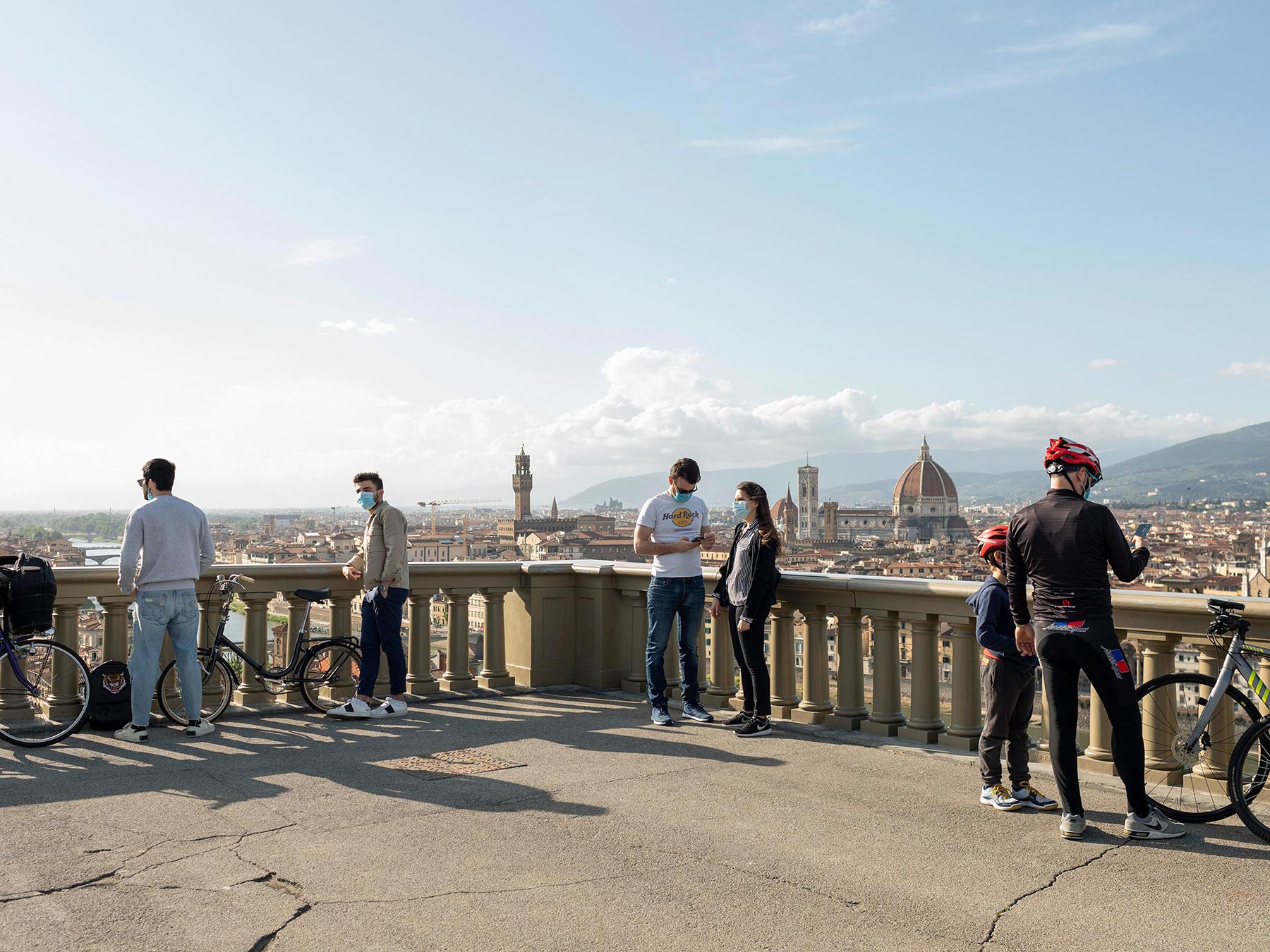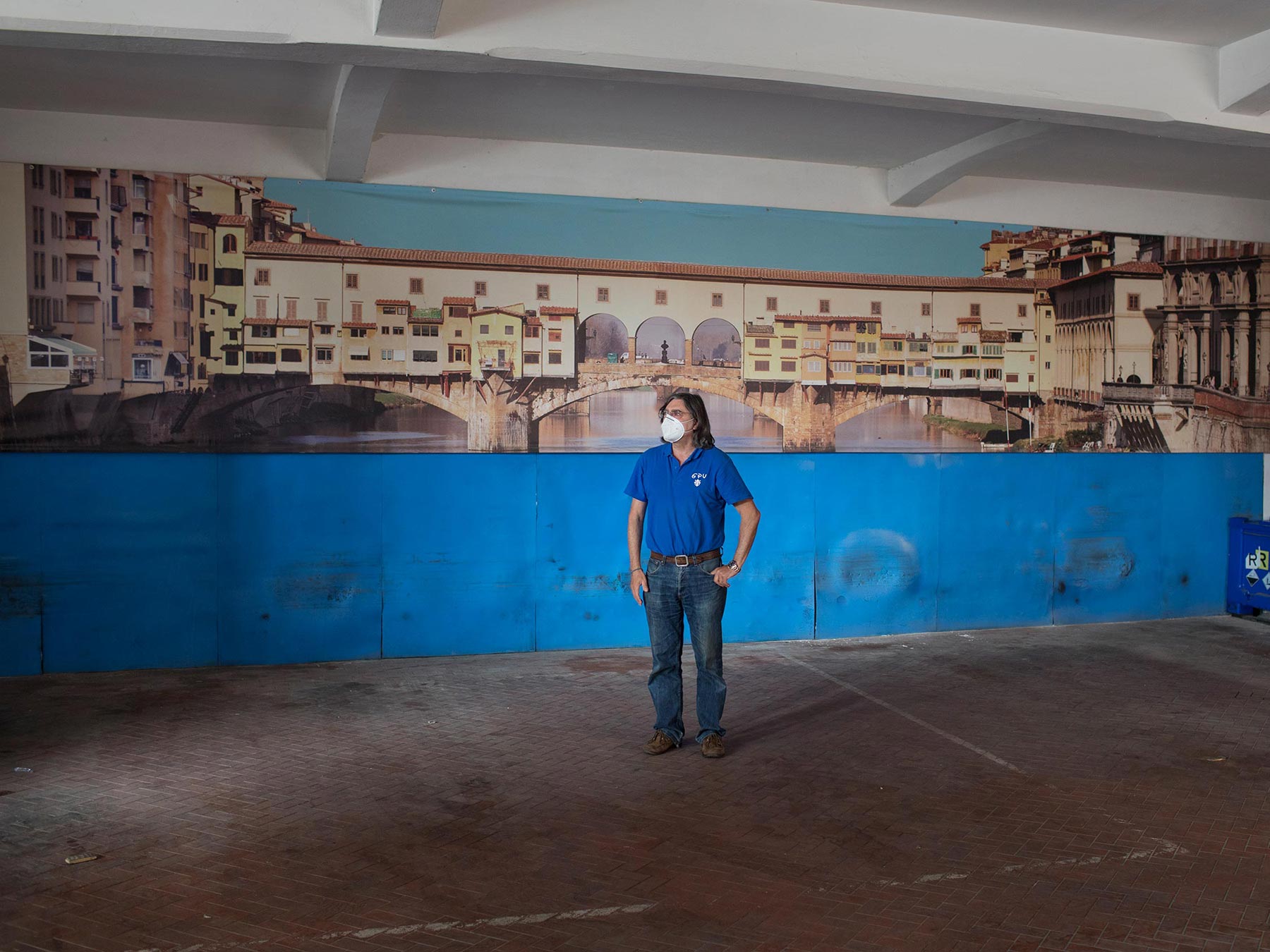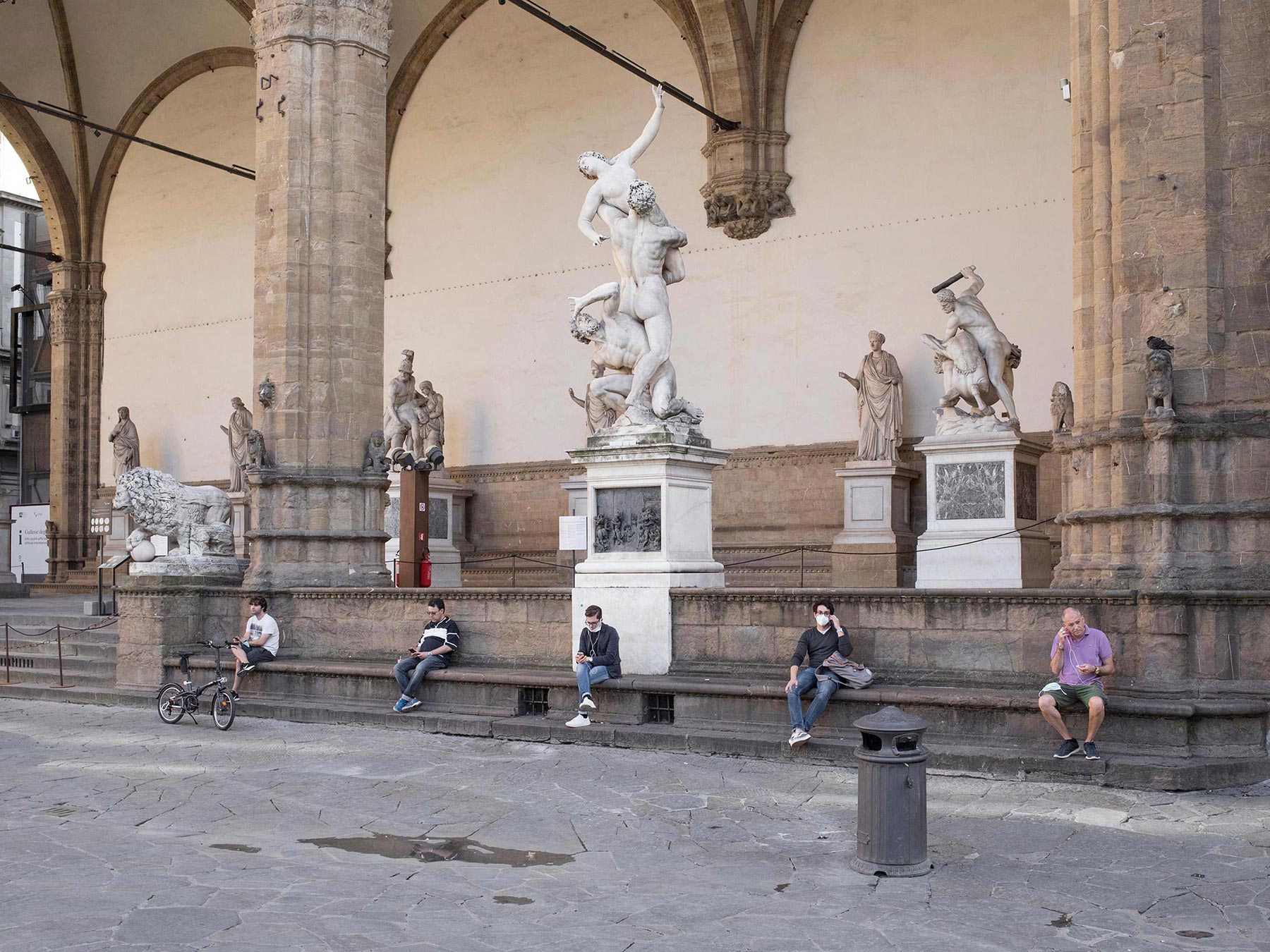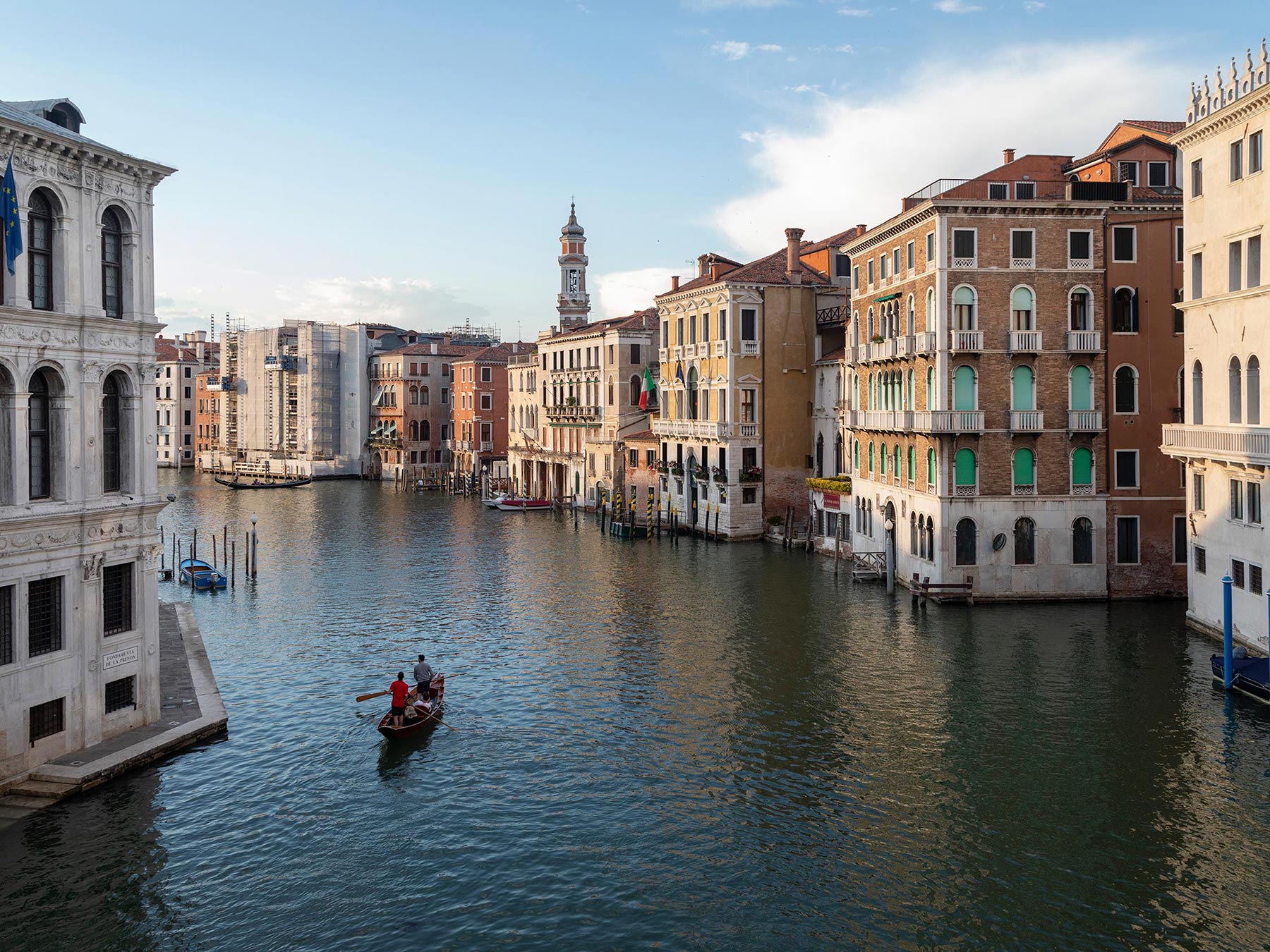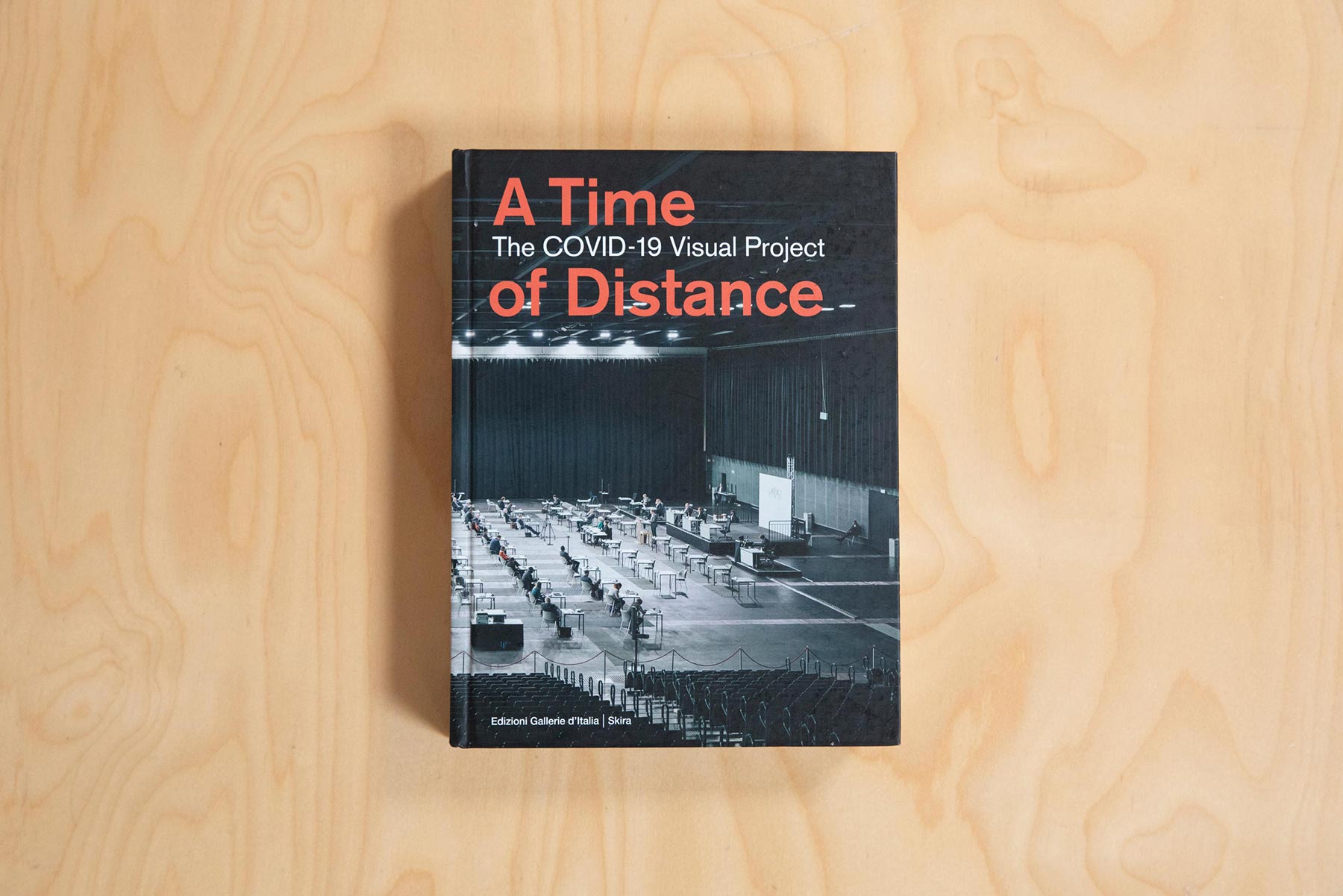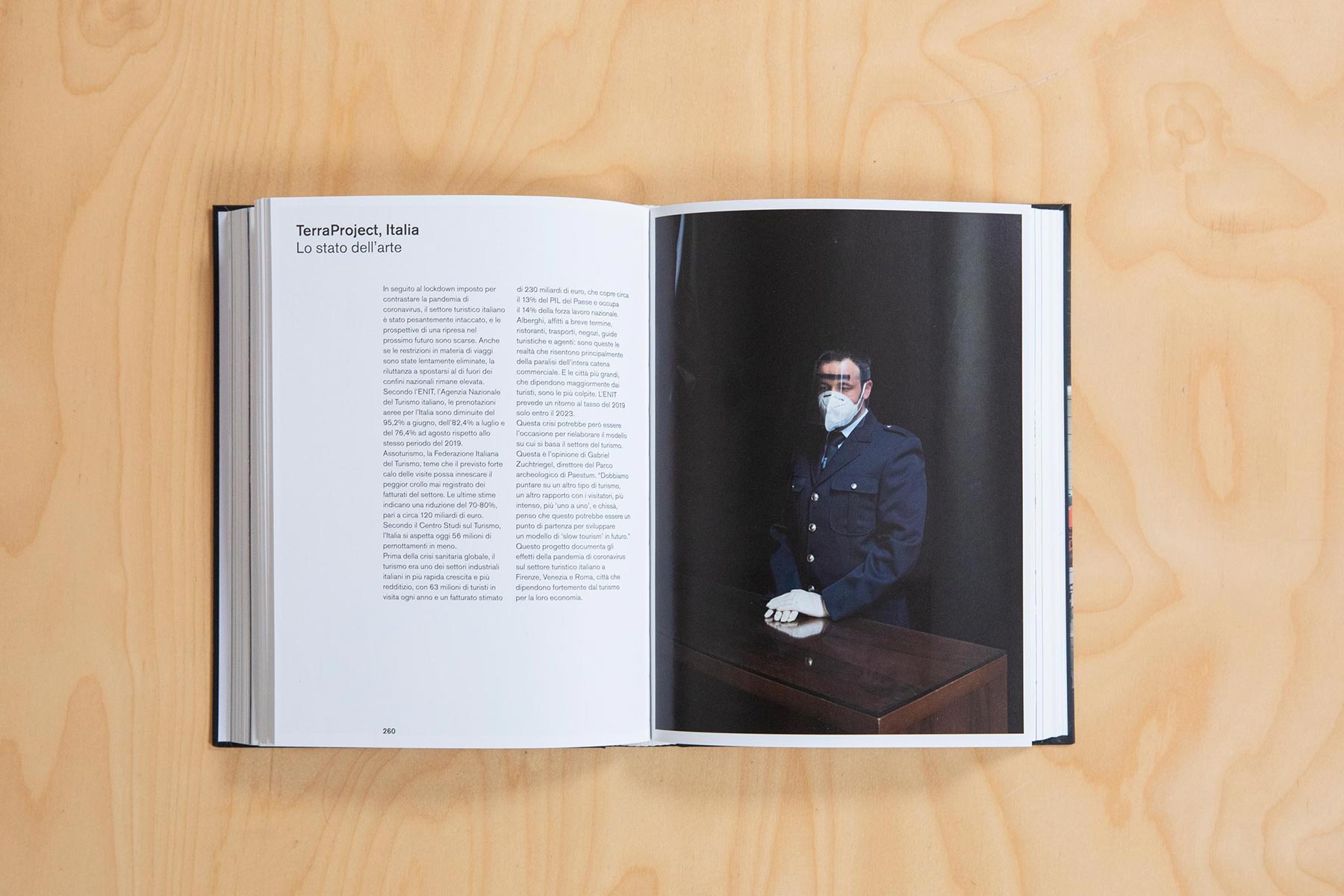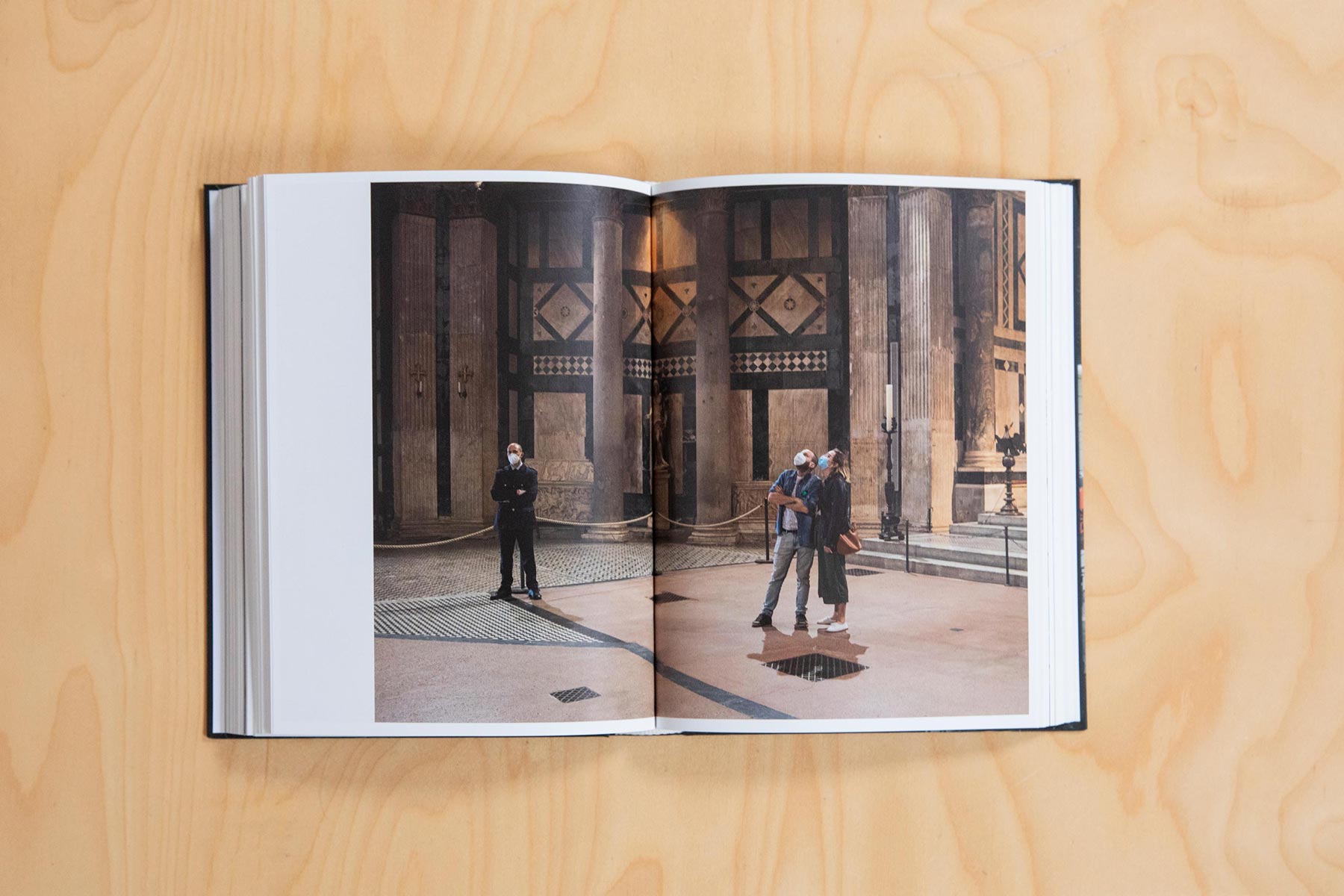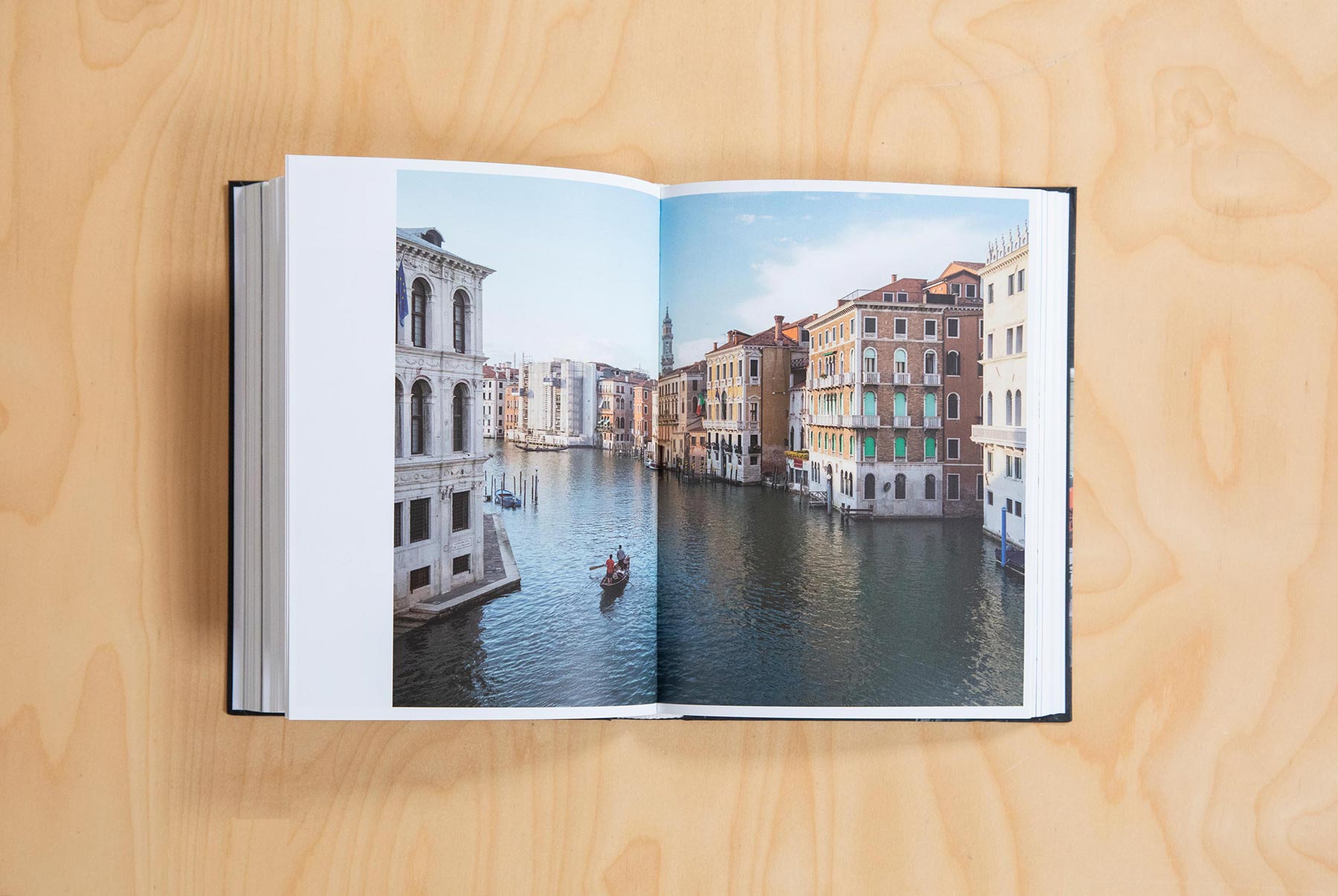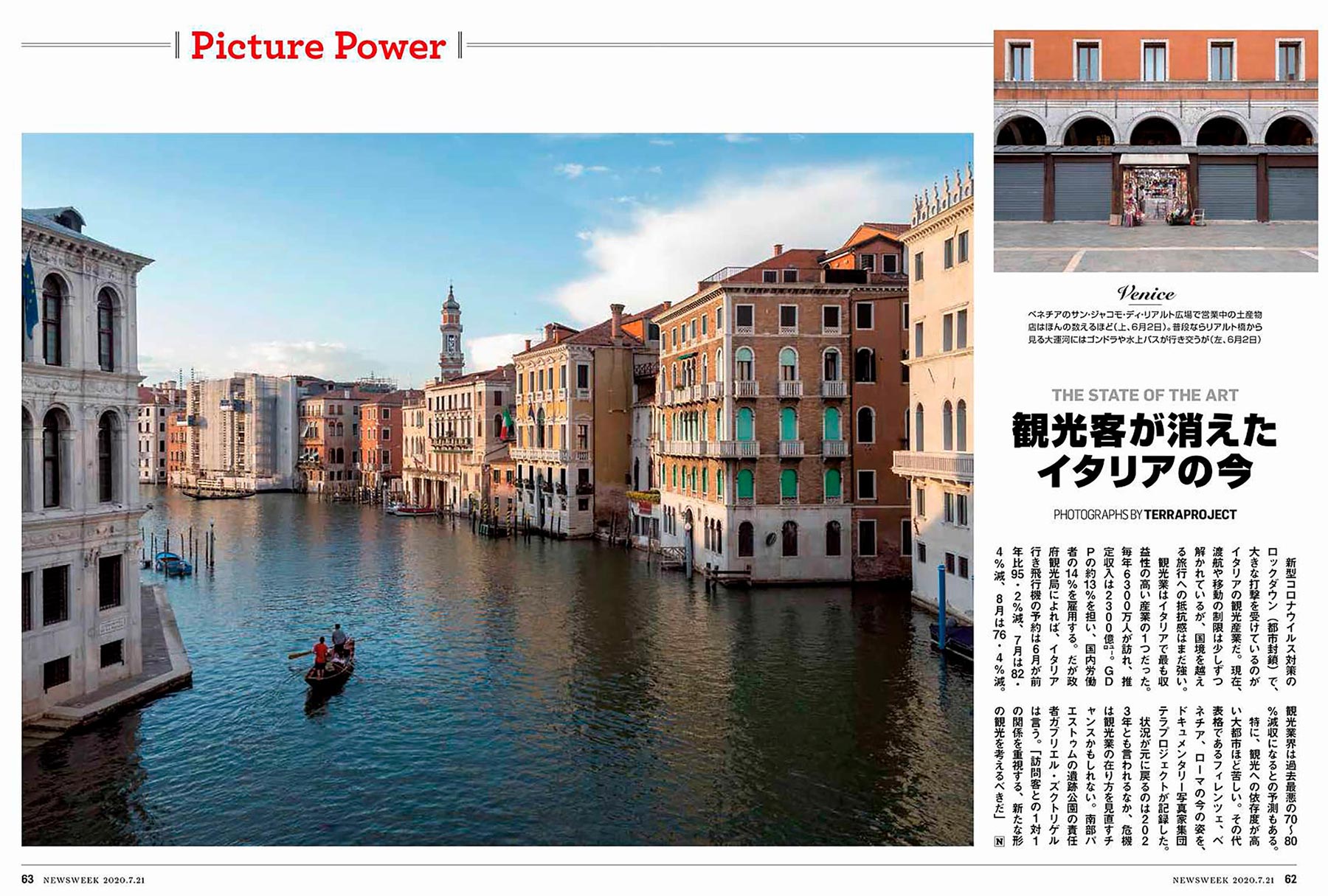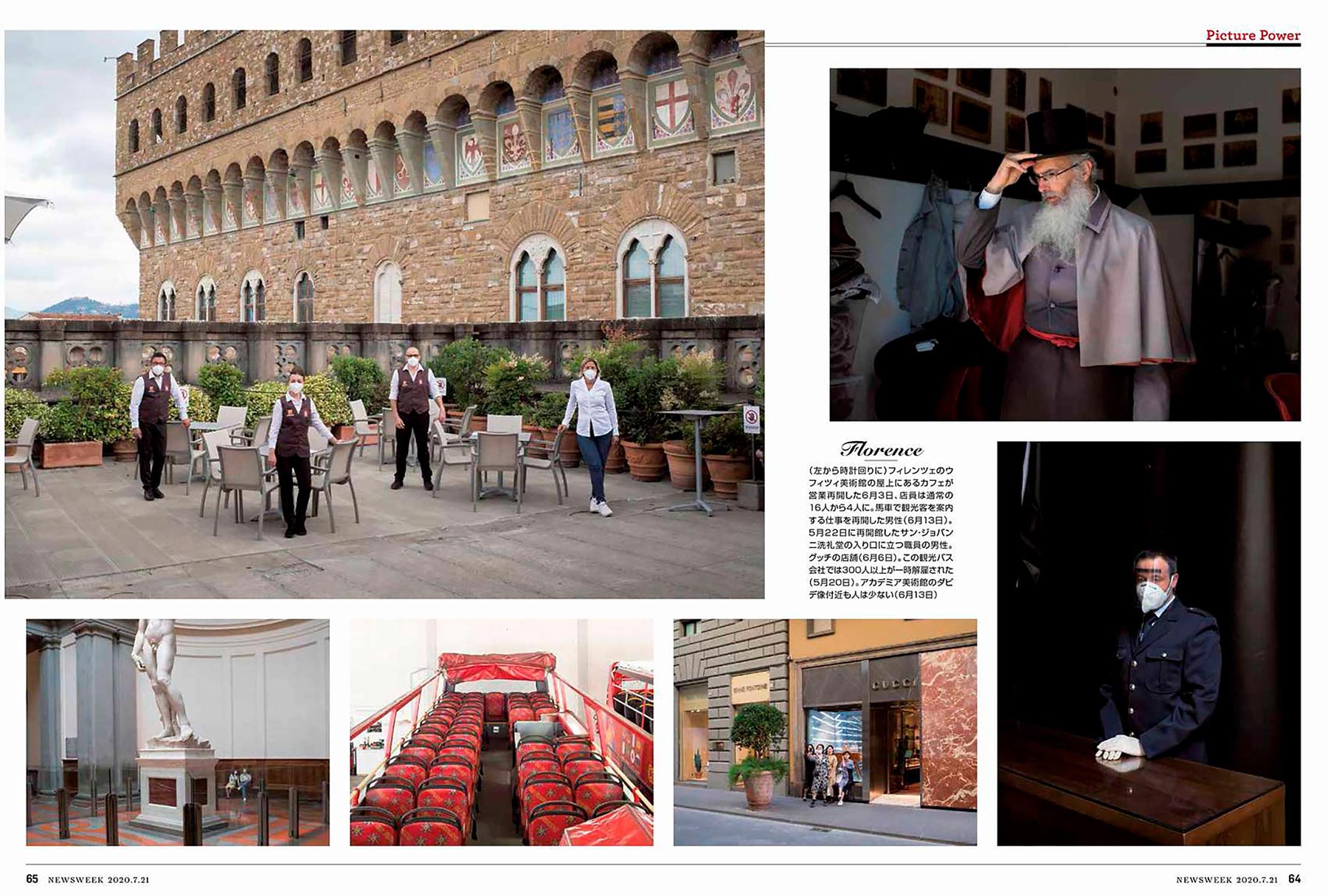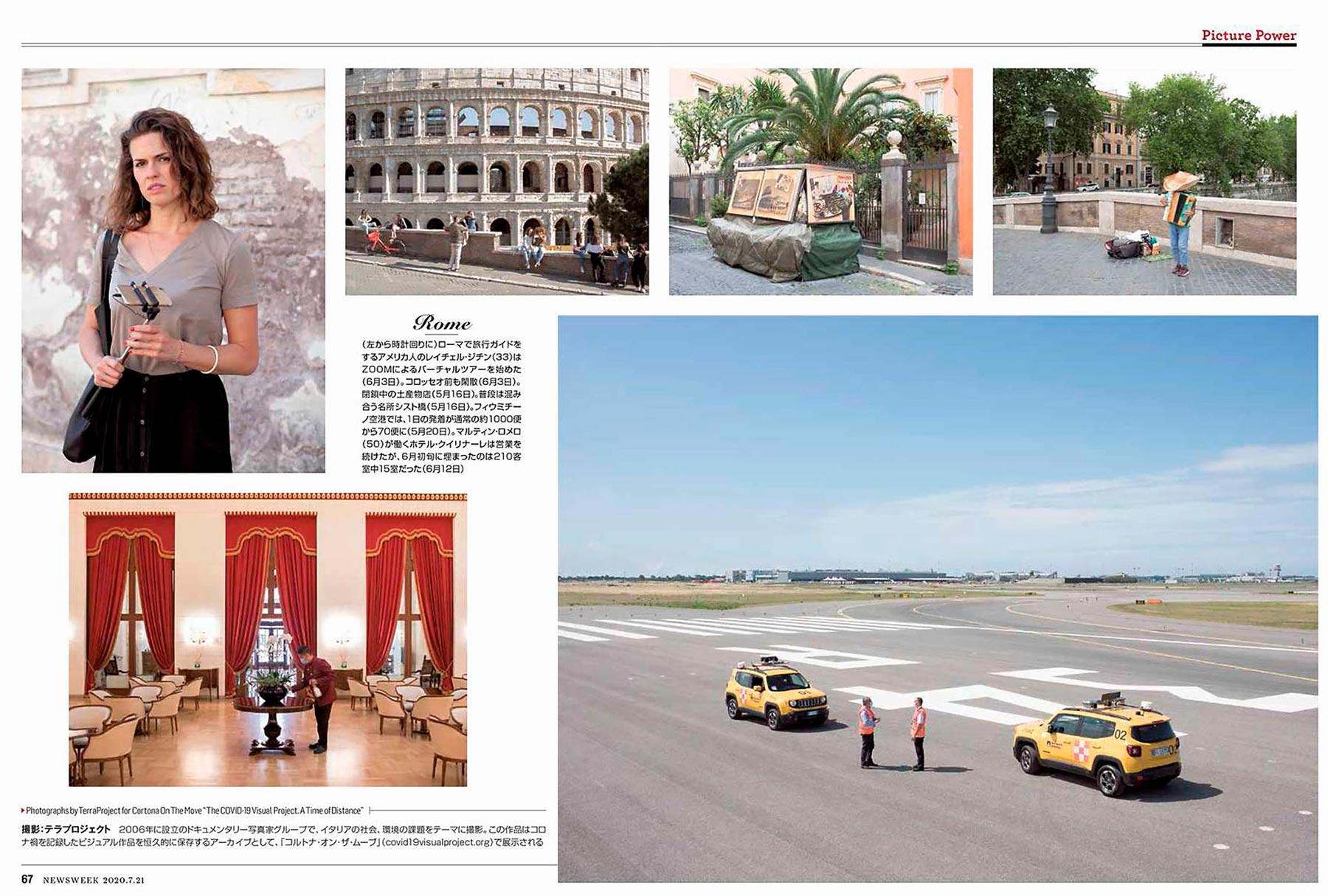Florence. People at Piazzale Michelangelo on May 2nd, the first day out after the lockdown. The viewpoint offers the most iconic sight over the city, the third most visited in the country.
With the lockdown imposed to curb the Covid-19 pandemic, the Italian tourism sector has been heavily impacted, and the prospects for a recovery in the near future are feeble. The project is a documentation of the effects of the coronavirus pandemic on the Italian tourism sector in Florence, Venice and Rome, all cities which heavily rely on tourism for their economy and has been commissioned by Cortona on the Move Festival and can be viewed on the Covid19 visual project platform, a permanent archive on the Covid-19 pandemic.
According to ENIT, Italy’s national tourism agency, airplane reservations to Italy dropped by 95.2% in June, 82.4% in July and 76.4% in August compared to the same period of 2019. Assoturismo, Italy’s tourism federation, fears that the expected steep fall in visits could trigger the worst ever recorded drop in revenues of the sector. Recent reports calculate a 70% – 80% reduction in revenues, equal to about 120 billion euros. According to the Centre for Tourism Studies, Italy is now expecting 56 million fewer overnight stays.
Before the health crisis, tourism was one of Italy’s fastest growing and most profitable industrial sectors, with 63 million tourists visiting each year and an estimated revenue of € 230 billions, covering about 13% of the country’s GDP and employing 14% of the national workforce. Hotels, short-term rentals, restaurants, transport, shops, tour guides and agents. These are the businesses mainly affected by the paralysis of the entire value chain. And larger cities, which depend more on tourists, are the most affected. ENIT expects to return to the 2019 rate only by 2023.
However, this crisis could be an opportunity to rethink the model on which the tourism sector is based. This is the opinion of Gabriel Zuchtriegel, director, of the archeological park of Paestum. “We must focus on another type of tourism, another relationship with visitors, more intense, more ‘one to one’, and who knows, I think this could be a model for developing ‘slow tourism’ in the future”.
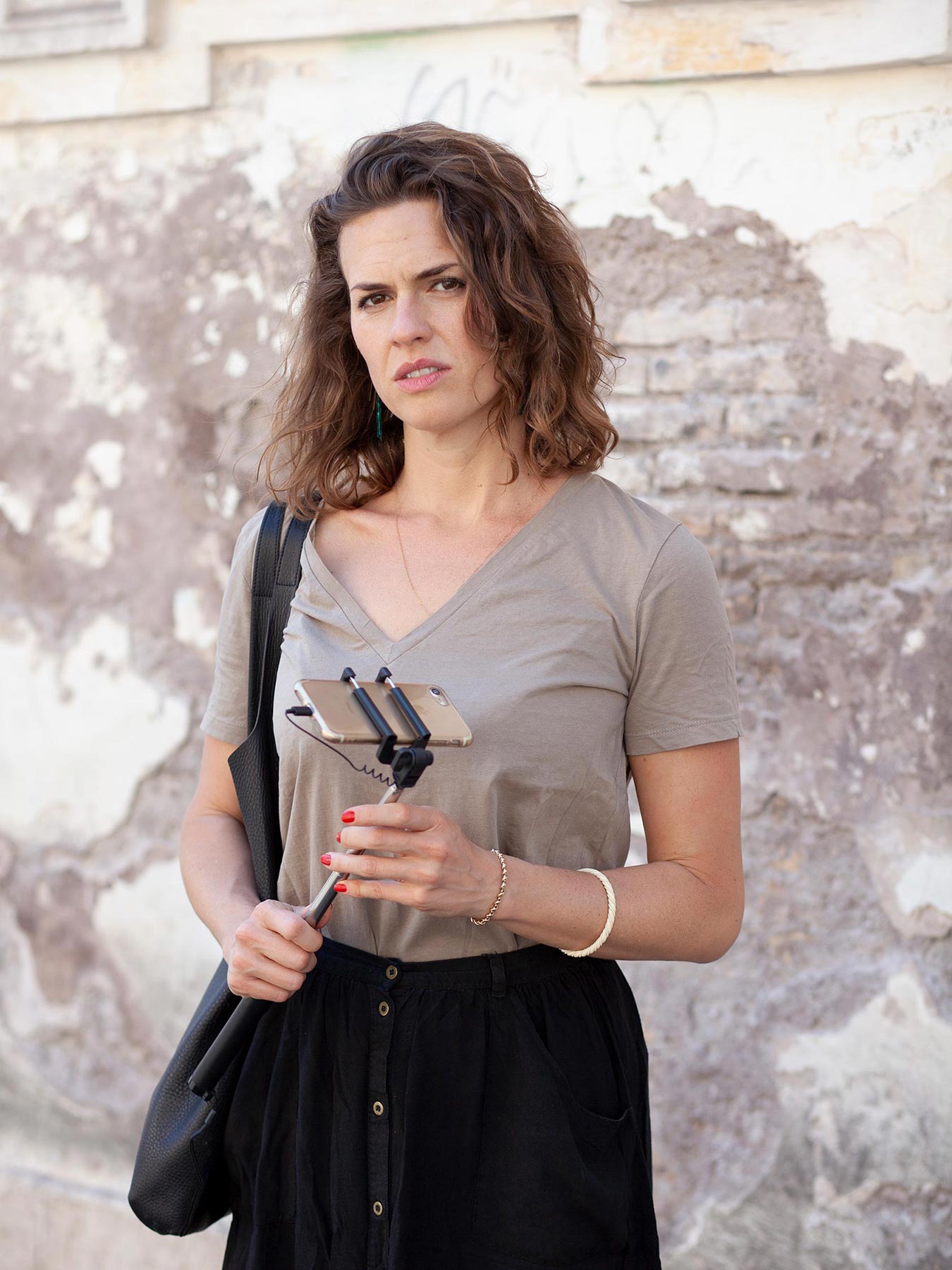
Rome. Rachel Zitin, 33 years old, a tour guide from the USA, has been living in Rome since 2010. With the pandemic she started doing virtual tours via Zoom mostly to Americans. To diversify her activities she also started giving virtual and live yoga classes.

Rome. The Trevi fountain. Rome receives more than 20 millions of visitors a year and many of these visit this landmark.
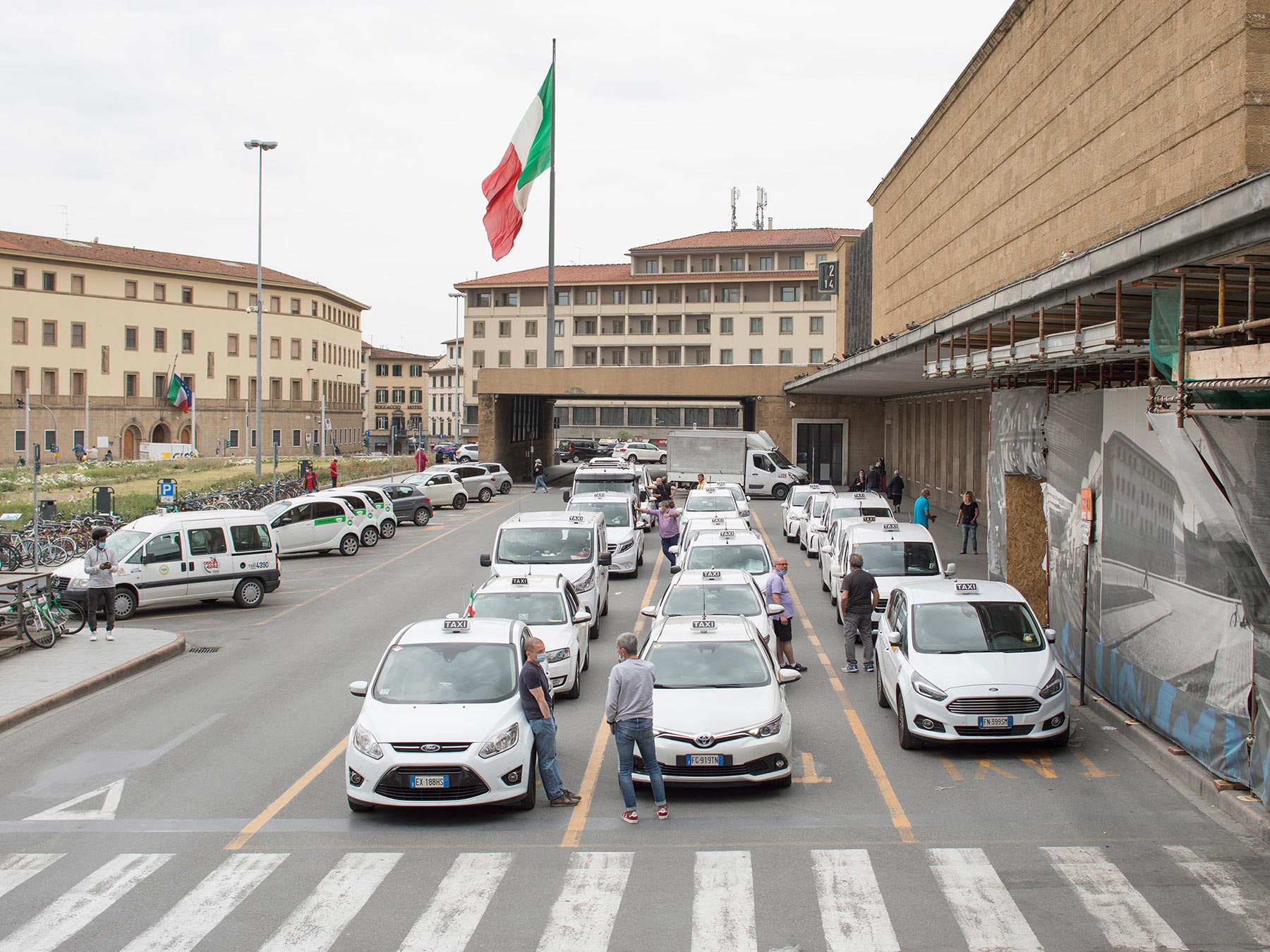
Florence. Queue of taxis waiting for customers at the Santa Maria Novella railway station. In 2020 the Sole24Ore estimates a 25.8% drop in tourism in the city of Florence.
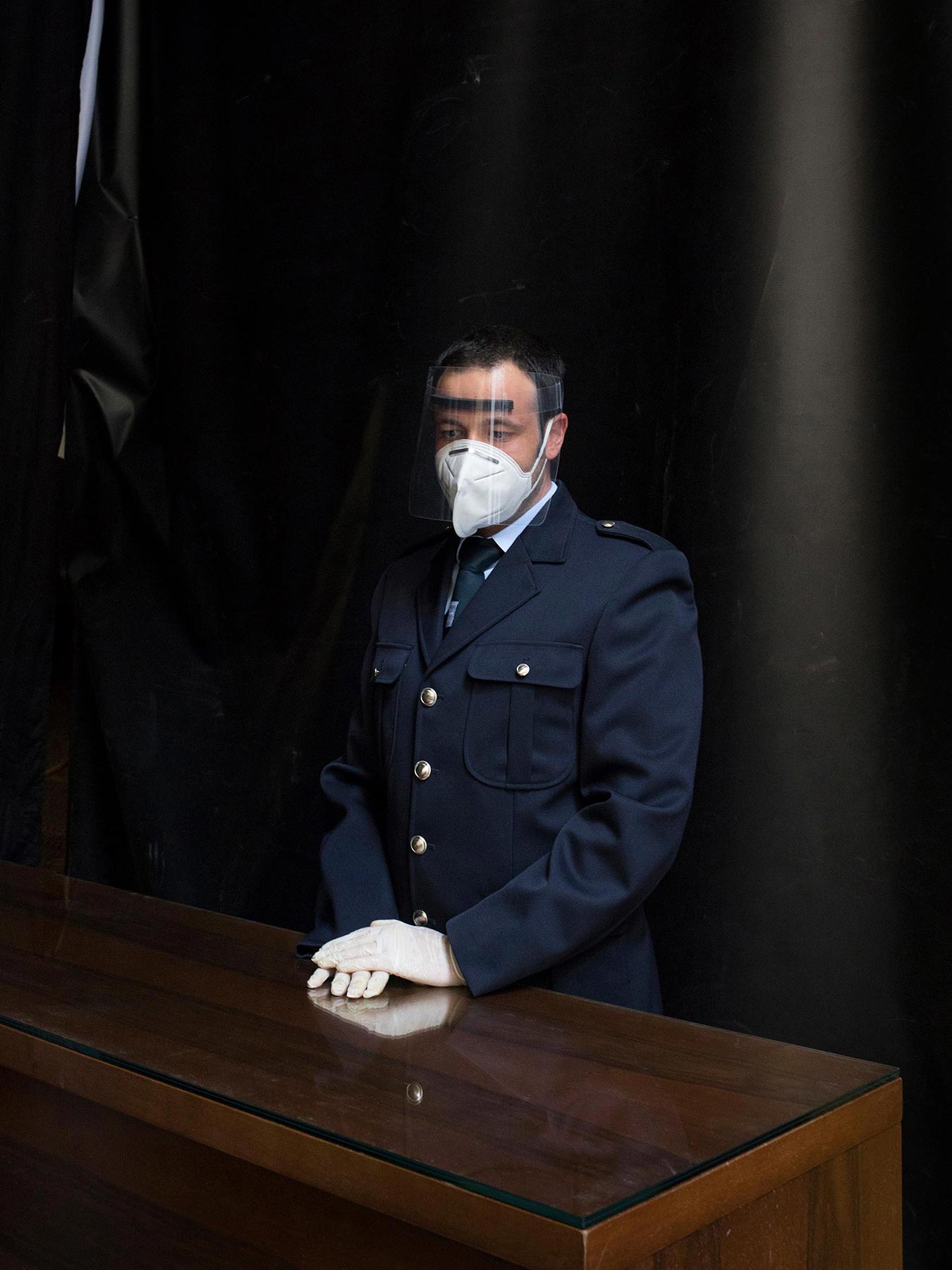
Florence. Alessio Tizzanini at the entrance of Battistero, he works here since 2 years. The first day of reopening was 22nd of May. For 2 weeks the entrance was free, in 24hours the reservation agenda was completelly booked. For security reasons the complex is able to host 300 people per day instead of 3000. They calculate a loss of 20 million euros. All the restoration construction sites are stopped.
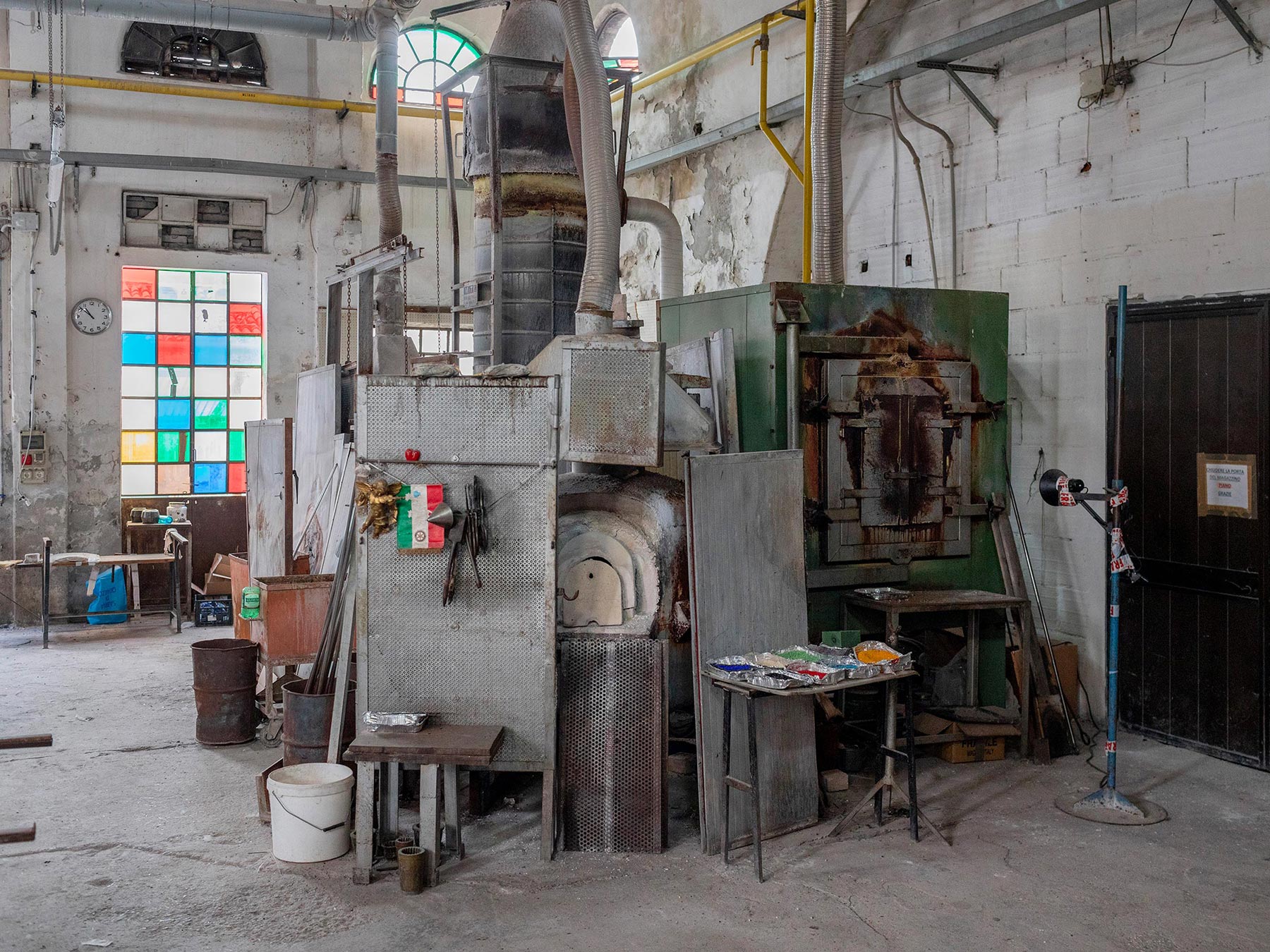
Murano, Venice. Colleoni Glassworks, active since 1980 with mainly American customers. The 3 ovens are closed from March 8th with the 14 employees all in layoffs.
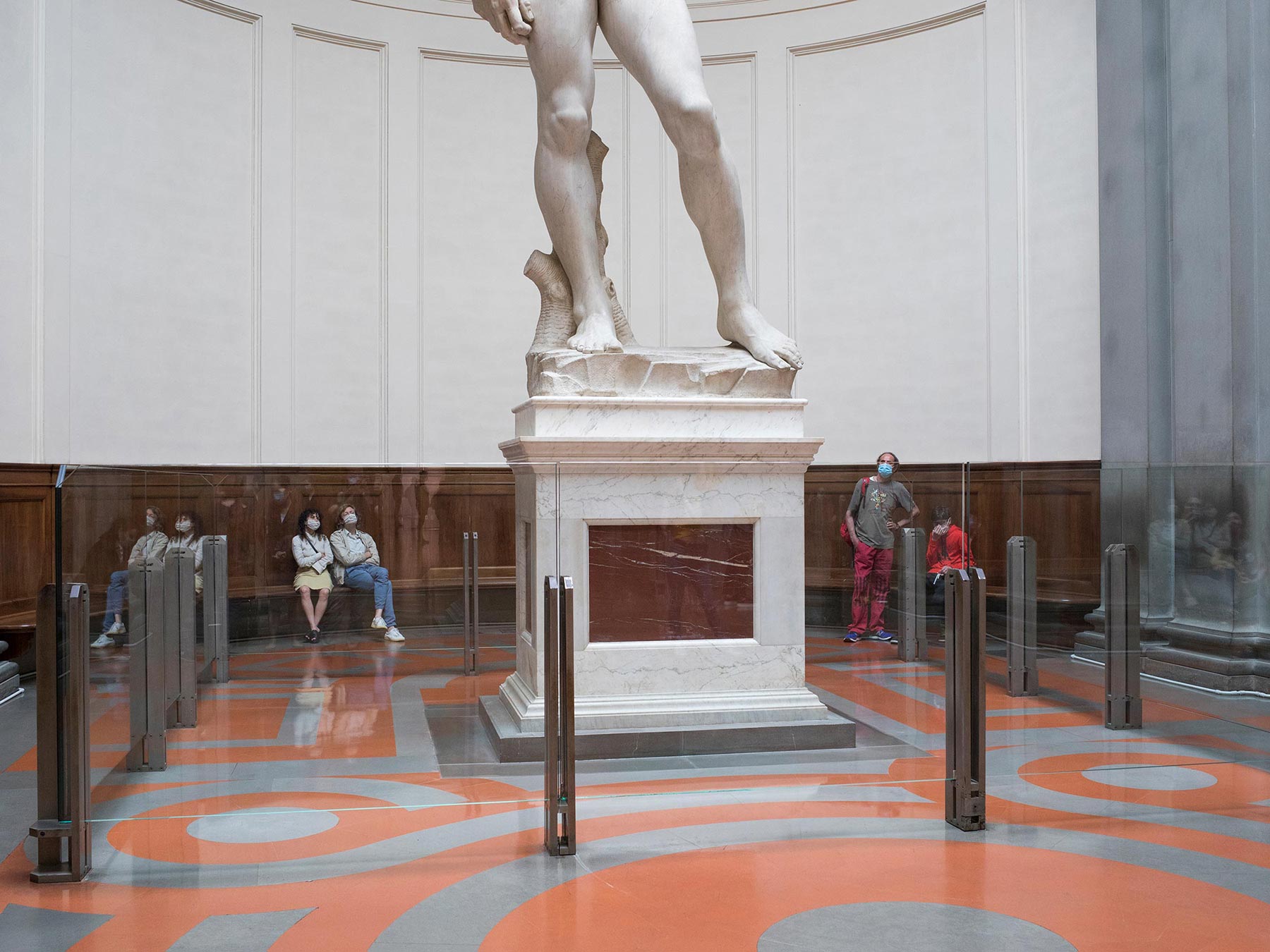
Florence. Tourists in front of the David at the Galleria dell'Accademia. The Museum opened the 2nd of June. Only 65 people at time are allowed to enter.
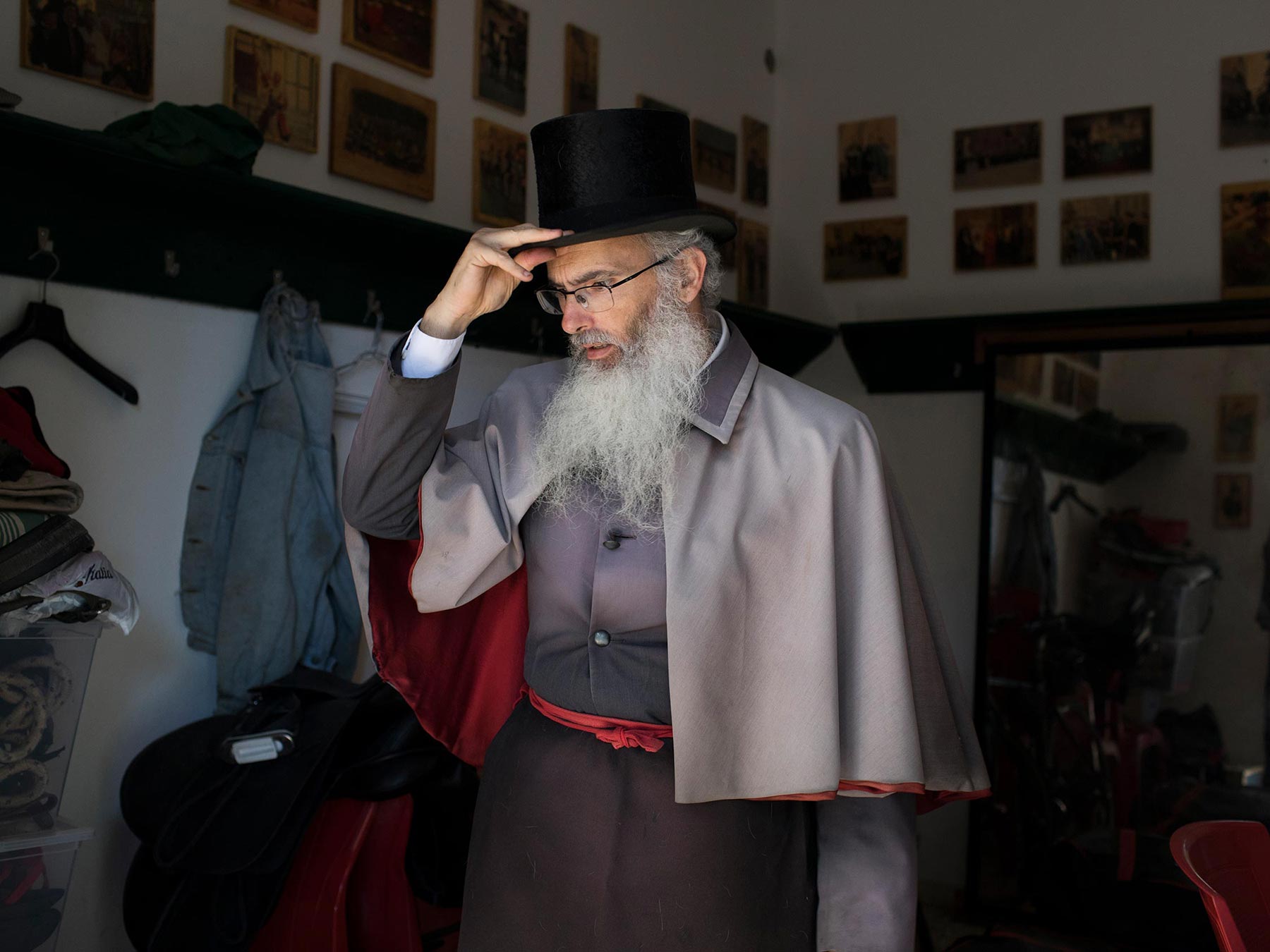
Florence. Giacomo Goldkorn Cimetta, 46 years old, coachman dressing with traditiona medieval clothes. He takes tourists with his horse-drawn carriage around the historic center. June 13th was his first trip after the lockdown.
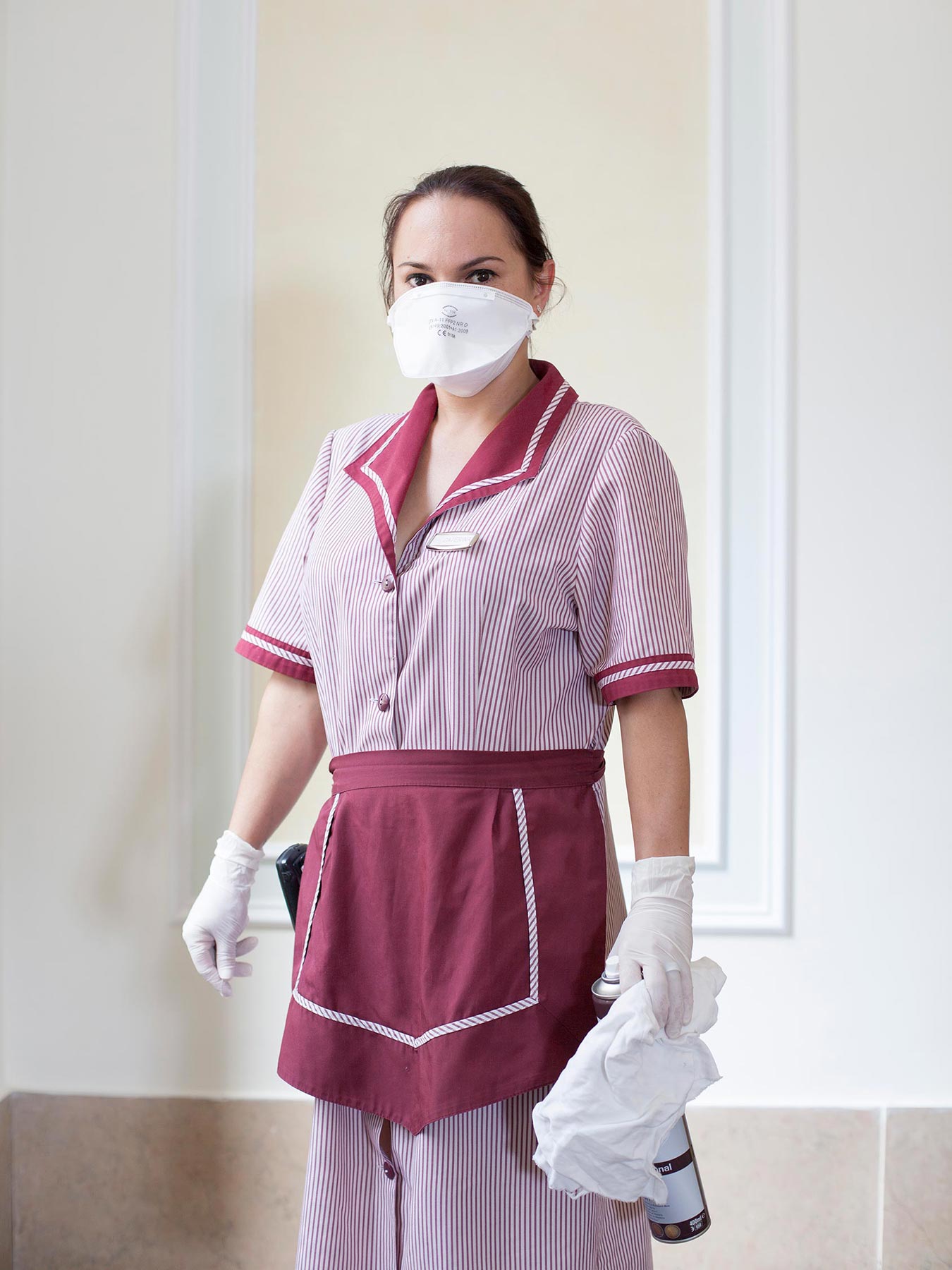
Rome. Caterina Zavoni, 33 33 years old, has been working at the Hotel Quirinale since 2013. During the lockdown the hotel has been opened but had no clients for 3 months. The first visitors arrived at the beginning of June. The hotel is part of Federalberghi, the main Italian association of hotels, which includes 27 000 of the 33 000 hotels present in Italy. To date, only 40% of the hotels are open. In big tourist cities the number is even lower.
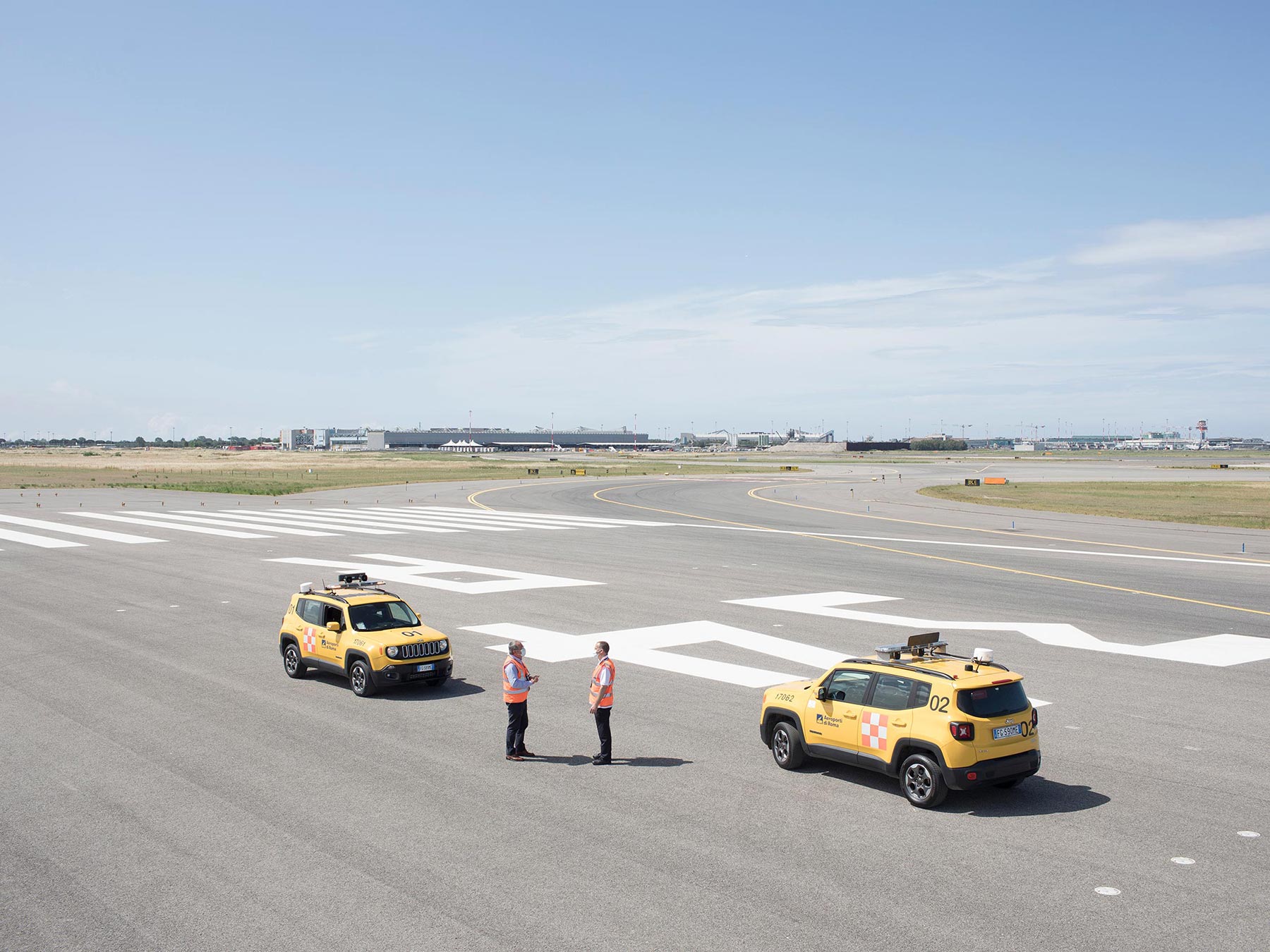
Fiumicino. Two cars patrolling the grounds of the Fiumicino international airport. During the lockdown, about 70 flights/day flew to and from the airport instead of 1000.
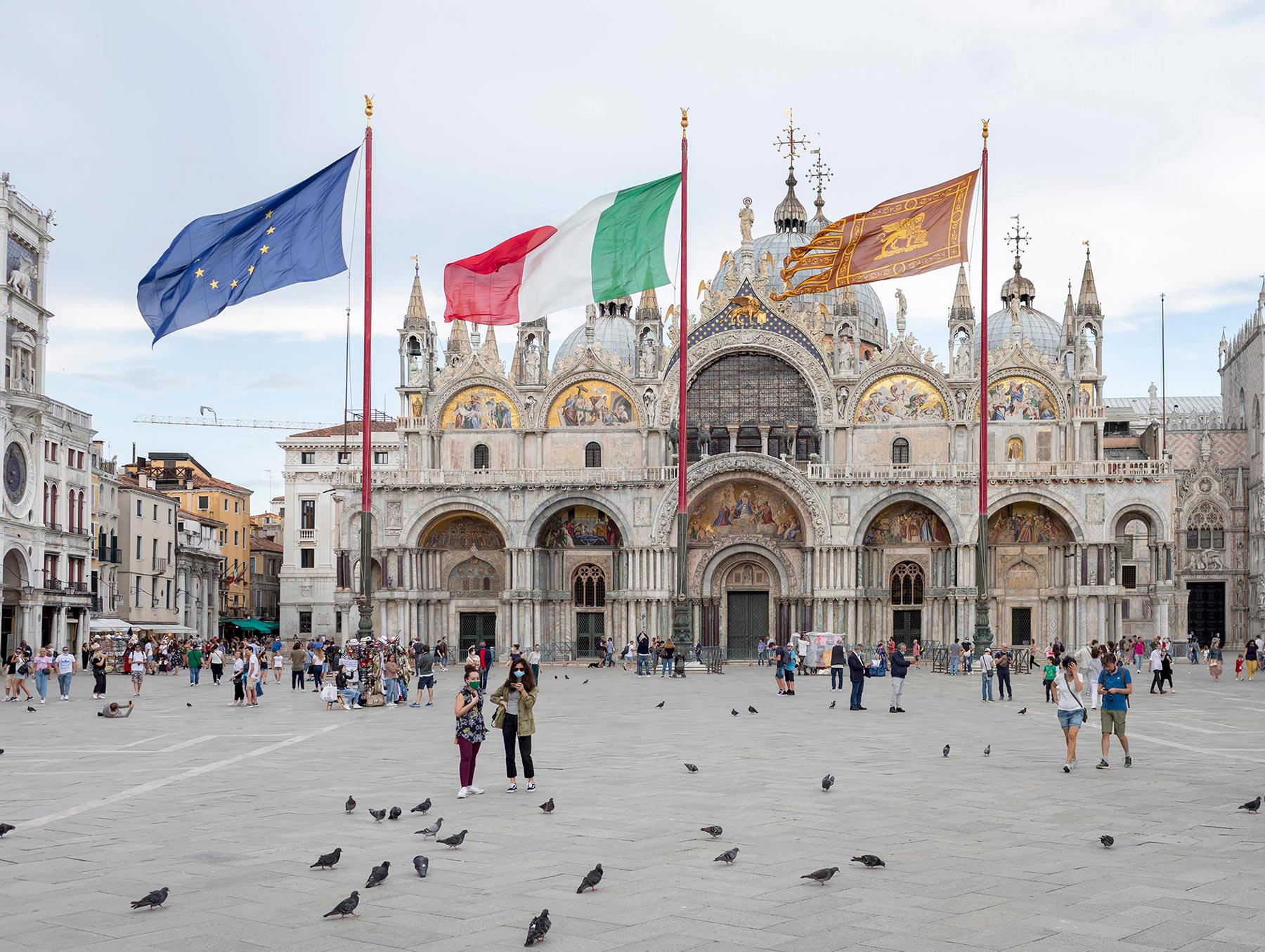
Venice. People are seen in Piazza San Marco on June 2nd, Republic Day. Of all the cafès in the square only 2 have reopened since the end of the lockdown.
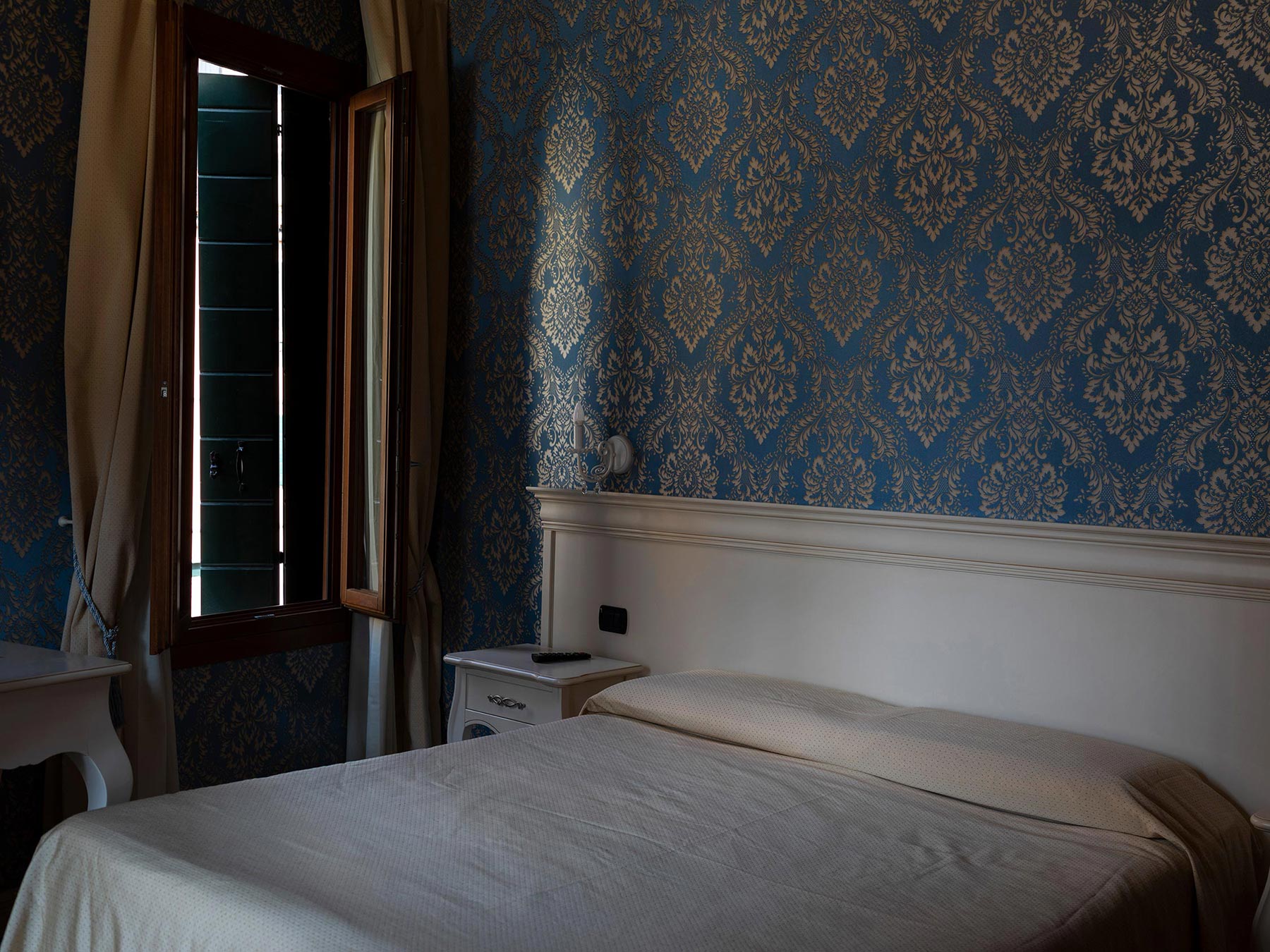
Venice. A room at the Charming Venice Santa Fosca Hotel. The 15 employees are in layoffs while the Hotel is open but with no customers. Tourism is the leading industry in the Veneto region with 18 billion annual sales for 70 million visitors, 68% from abroad, more than a third from Germany (around 15 million). The hotel is part of Federalberghi, the main Italian association of hotels, which includes 27 000 of the 33 000 hotels present in Italy. To date, only 40% of the hotels are open. In big tourist cities the number is even lower.
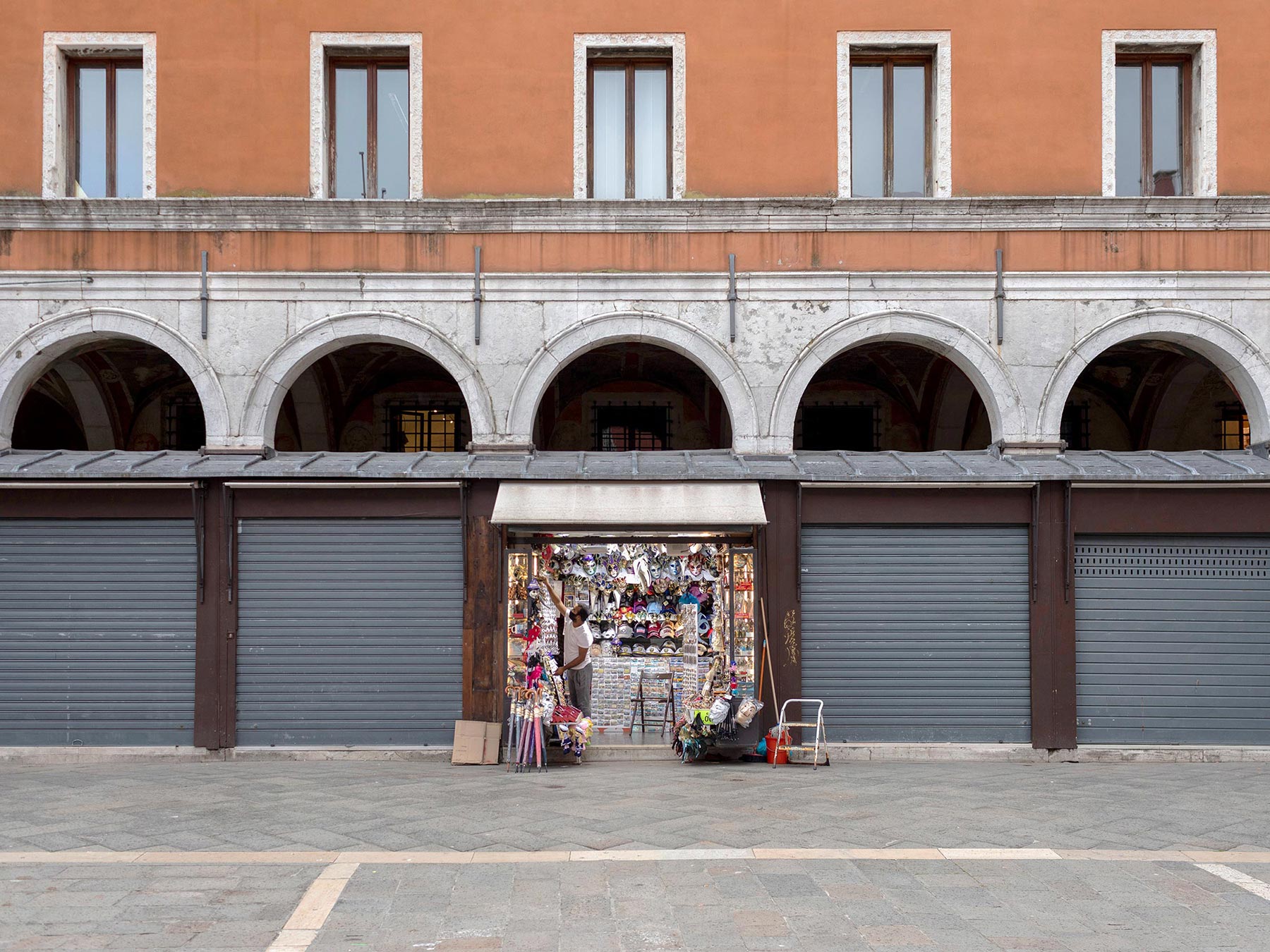
Venice. One of the few open souvenir shop in Campo San Giacomo di Rialto on June 2nd, Republic Day. Venice among the metropolitan cities is the most affected in terms of employment by the coronavirus with 42.6% of jobs at risk.
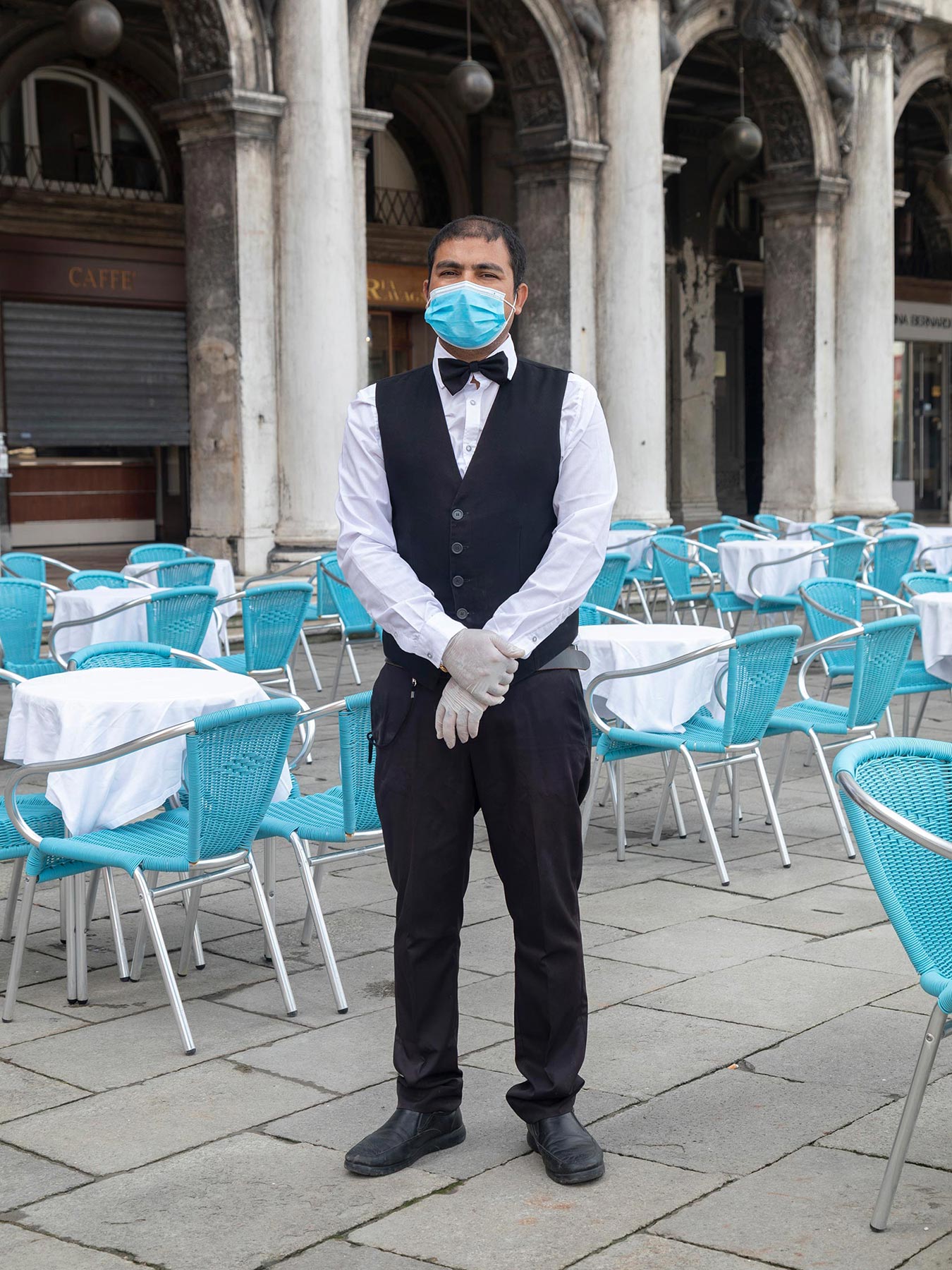
Venice. Ismail, 35 years old from Bangladesh has been for 13 years in Italy, 11 in Venice where he works at Caffè Aurora in Piazza San Marco. The Caffè reopened on May 18th after the period of lockdown.
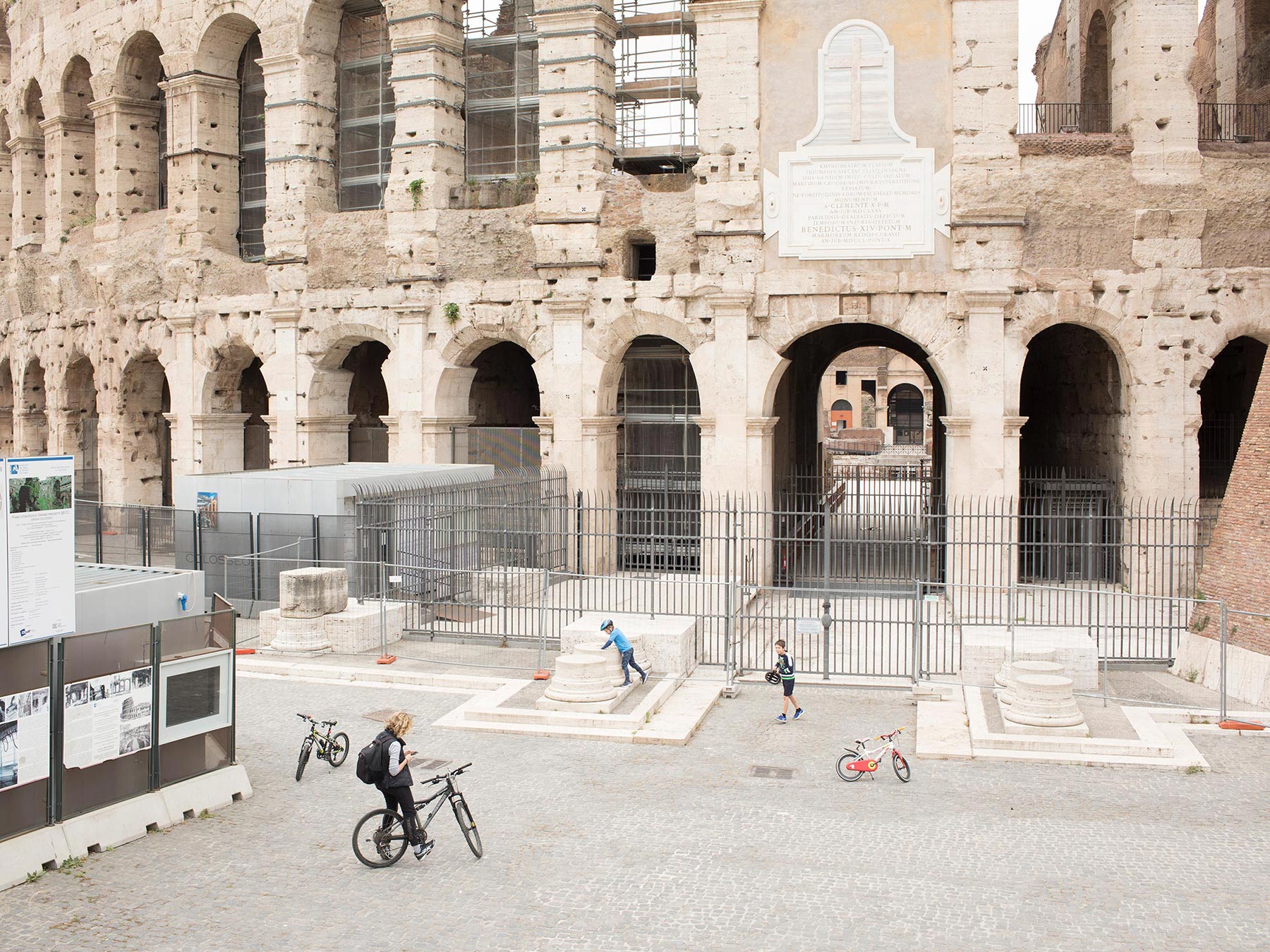
Rome. A family biking around the closed Colosseum. In 2018 the Roman amphitheatre welcomed a record 7.6 million visitors - an average of around 21,000 people a day - making it the most visited monument in the world.
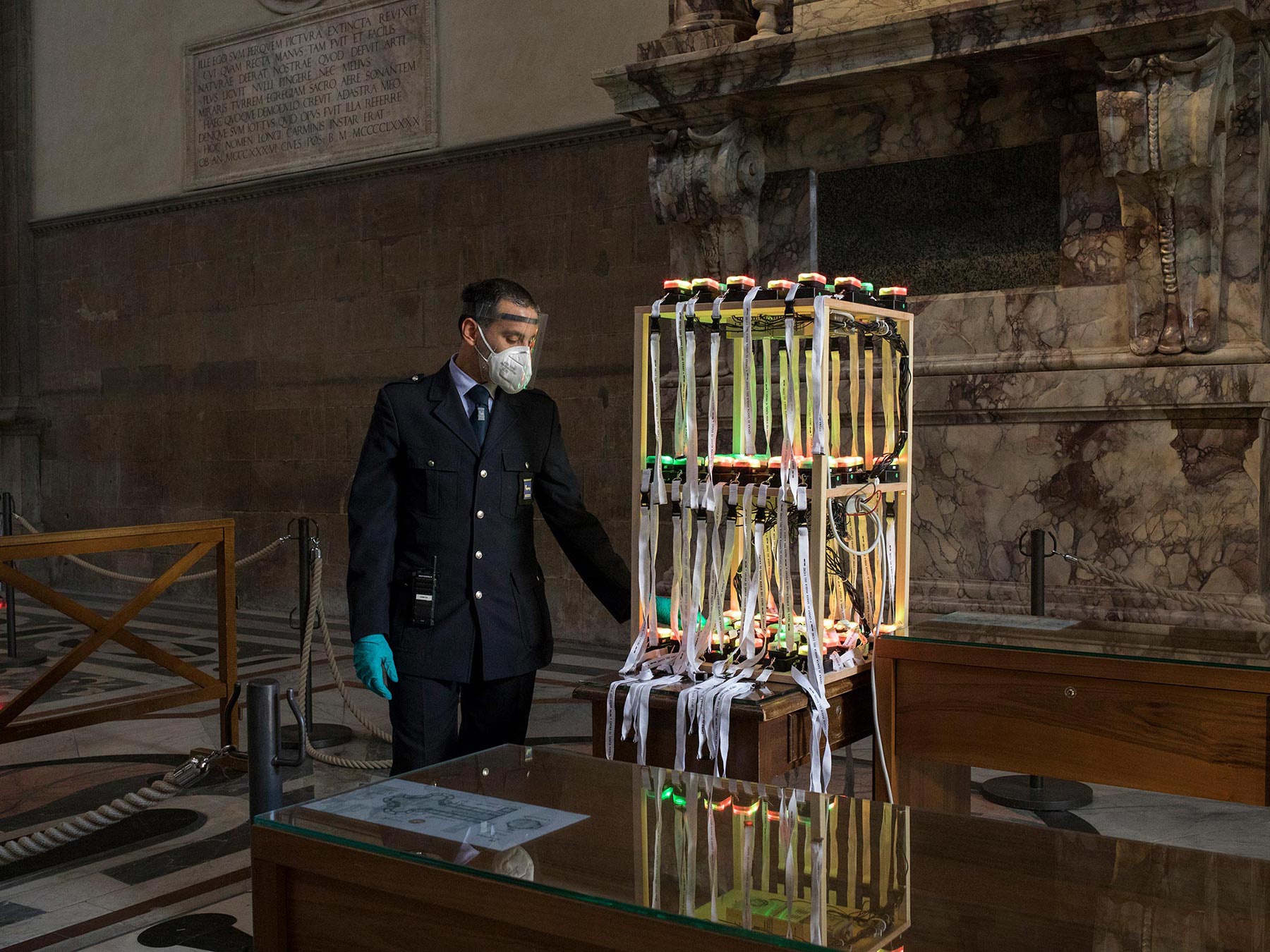
Florence. Inside Santa Maria del Fiore cathedral. A staff member distributes special devices to the visitors that alert you when you are too close to other people. The first day of reopening was 22nd of May. For 2 weeks the entrance was free, in 24hours the reservation agenda was completelly booked. For security reasons the complex is able to host 300 people per day instead of 3000. They calculate a loss of 20 million euros. All the restoration construction sites are stopped.
Book
A Time of Distance
Edizioni Gallerie d’Italia – Skira, 2020
The Covid-19 Visual Project
Curated by Arianna Rinaldo
Tearsheet
Publication on Newsweek Japan, July 2020

